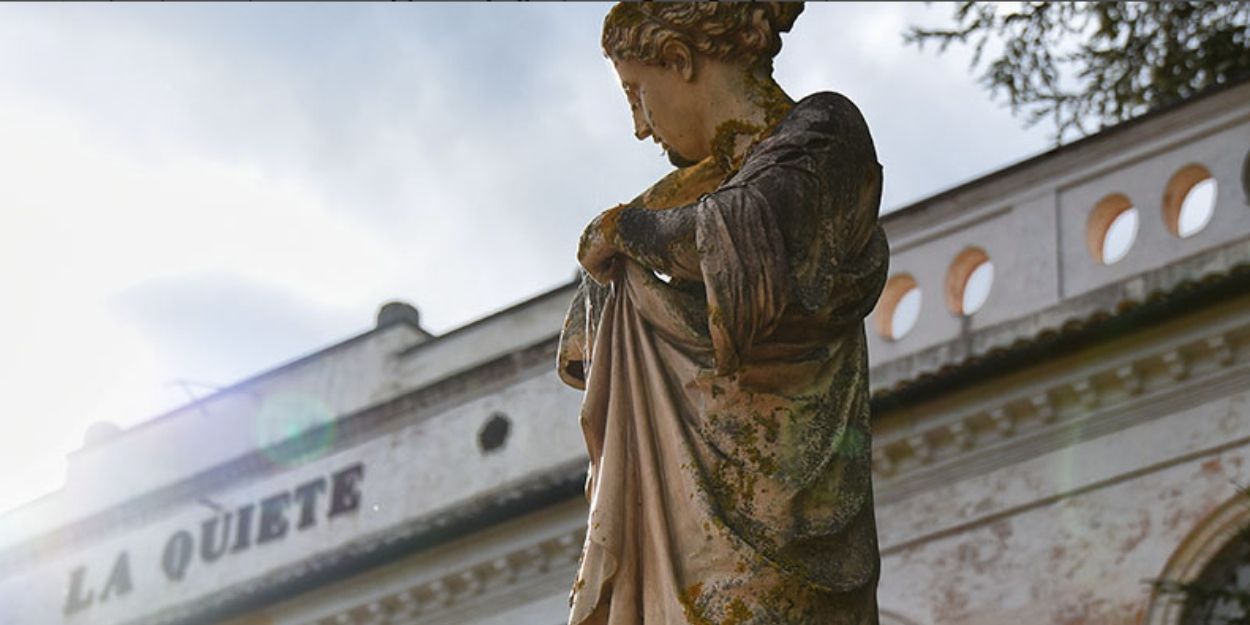Treia, the ancient Italian village known for the curious game 'pallone col bracciale' and for the autobiography by novelist Dolores Prato, features some of the most stunning estates in the Marche region, masterpieces embodying the highest architectural expression in 18th- and 19th-century Italy.
These dreamy places surrounded by lush parks are our next destinations. Have a look at the itinerary we've prepared for you and uncover hidden treasures of decadent charm.
Here are the most beautiful historic villas in Treia.

The itinerary of the most beautiful historic villas in Treia

The noble villas of Treia are among the most beautiful and unusual attractions in the province of Macerata, Le Marche. The area is rich in aristocratic estates and country houses that partly reflect the influence of genius architects such as Giuseppe Valadier and Andrea Vici.
Our itinerary is full of off-the-beaten-path destinations. While some mansions aren't open to visitors, and others may show signs of wear, all the sites in our list still offer an intriguing glimpse into the history and beauty of this delightful and little-known part of Italy.
Here is a quick preview of what we are going to do: discover 'hidden' neoclassical treasures, uncover ancient and non-tourity spots, take a journey back in time.
Learn more in our itinerary of the historic villas of Treia.
Historic Villas of Treia: A Hidden Neoclassical Gem

Following the Via Provinciale Romana, we reach the first stop on our tour of Treia's most beautiful historic villas. For maximum flexibility, we recommend driving.
Villa Spada is a splendid estate rising in Contrata San Maro. All around the villa stretches a stunning, nearly three-hectare park filled with centuries-old trees, Italian gardens, and small groves. The view is breathtaking, lengthening all the way to the sea!
Its other name is Villa La Quiete, and it was once a 16th-century Capuchin monastery transformed by Giuseppe Valadier into a country estate. An 1815 autographed sketch shows the original composition.
Curious and eclectic structures catch the eye as we stroll through the numerous pathways in the garden. You may come across a neo-Egyptian pavilion, a crenellated greenhouse, or a neo-Gothic gazebo.
Dominating the complex, however, is the grand neoclassical residence of Lavinio Spada, who turned its mansion into a quiet sanctuary secluded from the rest of world. The villa was where he shared a life of love with his wife, Natalia Komar, and pursued interests like science and poetry.
Botany, in particular, was the Count's great passion, an interest he channelled into the meticulous care of the extensive gardens, gradually filling them with over 10,000 different plant species.
After Spada's death, Villa La Quiete was sold off and soon fell into disrepair. It remained uninhabited for years and also served as an internment camp during World War II. Between the 1960s and 1980s, it housed a daycare and kindergarten.
A place marked by time but still imbued with the opulence of its past, today Villa Spada is ready to share its beauty and invites those who enjoy a good story to come and hear.
Diversion to the Mill Tower

Say goodbye to Villa Spada and its 19th-century charms and head towards Passo di Treia. However, before continuing our journey among the most beautiful historic villas in the area, stop to see the massive Torre del Mulino, a piece of the local past dating back to the 14th century.
A magnificent example of a mill tower, the fortress was designed to defend a millstone within its walls.
Numerous mills dotted Montcecchio—Treia's former name until the 18th century—guaranteeing prosperity and development to the local communities. Inevitably, they were the target of frequent attacks during the Middle Ages, so the need to fortify them became urgent.
The tower in Passo di Treia served as a necessary garrison to defend the Potenza Valley, a key junction for communication between Treia, Macerata, Urbisaglia, and San Severino.
Admire it from the outside: standing 15 meters tall, it features Gothic elements like ogival cross vaults reminiscent of the Fiastra Abbey and the Castello della Rancia in Tolentino.
An ancient villa in ruins
One of the oldest historic villas around Treia is located in Passo di Treia. The name is Villa Valcerasa, also known as Villa Ruspoli, a monumental residence whose origins date back to the 13th century.
At the time, the site was a place of devotion linked to the Franciscan friar Pietro da Treia. Only in the 18th century was the old monastery converted into a noble villa at the behest of the owner, Cardinal Nicola Grimaldi.
Much of the estate is now in ruins, but it still represents a significant testimony of Le Marche history and a symbol of the neoclassical architecture in the region. Its beauty, inevitably marked by time, evokes that melancholic charm that urbex enthusiasts know so well.
The villa consists of a large park and refined buildings: the principal patrician house, a church with a bell tower, another building probably used as a farmhouse and finally, the so-called Roccolo, a small jewel attributed to Valadier. The latter building is the only part of Villa Valcerasa currently in use. Restored, it is now a B&B.
An out-of-the-ordinary park
In a splendid panoramic area north of Passo di Treia, we find Villa Lazzarini, a historic residence surrounded by a large park that a local winery now owns.
Going further towards Villa Potenza, a sumptuous avenue lined with plane trees and elms anticipates Villa Luzi (or Villa Votalarca). It dates back to the first half of the 18th century but underwent renovation by Andrea Vici in the 19th century and a subsequent extension.
A beautiful Italian garden and an English-style park complete the property. Inside its gate, there is so much to marvel at: water features, mock classical ruins, statues, small temples, pagodas and unexpected animated scenes, such as the ingenious command-opening door of the gardener's house and the statue of the monk with 'movable' arms in the Gothic chapel. Also, a scenic reproduction of Sibyl's cave with a sculpture in it was built on a small artificial promontory.
Other splendid historic villas in Treia

Villa Dolce Riposo is the residence desired by the Acquaticci nobles in Contrada San Marco. Again, we have a property that reflects the balance and symmetry typical of Valadier's residential design, all while being surrounded by vast green spaces perfectly integrated into the Marche landscape.
Such characteristics recur frequently in most noble residences that outline the surroundings of Treia. These include Villa Leonardi, owned by Carlo Napoleon Bonaparte, a cousin of Emperor Napoleon III; Villa Voglia, built on an ancient Franciscan monastery complex; and Villa Rutiloni, the Pascucci family's holiday home.
Other historic villas in Treia are Villa Valcampana, Villa Carnevali, Villa Pignotti, Villa Molle.
As mentioned earlier, many of these properties are not accessible to the public except for their external gardens or during special events like the FAI Days. However, some villas have been converted into bed and breakfasts or agriturismi, while others are currently undergoing renovations. For this reason, we recommend contacting Pro Loco di Treia for the latest updates and additional information regarding visits.
About the author
Written on 04/12/2024



Lorena Calise
Consult our itinerary of the historic villas of Treia and discover extraordinary places in Italy that few people know about.